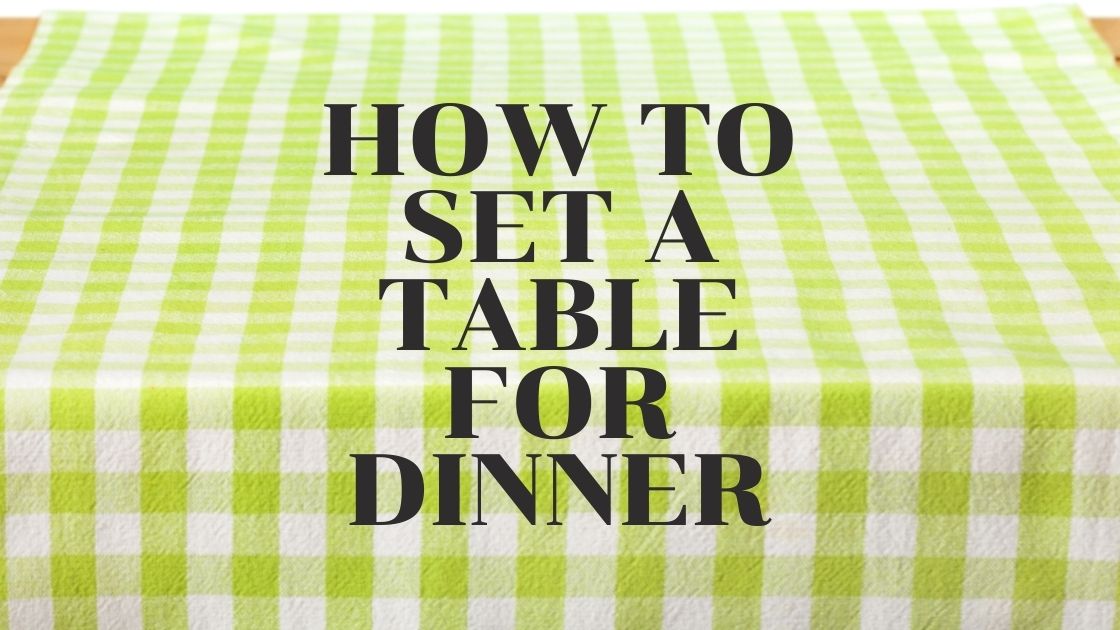Dress Up Your Dinner Table: How to Set a Table for Dinner

There are few household chores performed more often than setting the table for dinner or another meal. Often when you think of setting the table, a formal dinner comes to mind. However, there is no reason every sit-down meal can’t be presented in a cohesive way for the family.
Table Linens: Setting the Stage
Although many people think of using cloth table linens when hosting a formal or holiday dinner, they don’t consider them for daily use. However, the regular use of a tablecloth and/or cloth napkins on your dinner table can add a special touch to an otherwise familiar ritual.
Using a fabric tablecloth immediately makes your settings pop, no matter how basic the meal. Tablecloths can be found in any color or pattern that you can imagine, and there’s no reason to stick with just one all the time. Affordable solid or basic-print tablecloths can be found from iQLinens.com. These can be a perfect backdrop for a table set with vintage plates or colorful napkins.
A practical combination for a lovely kitchen table setting is to pair a table runner with cloth napkins in complementary colors and patterns. This combo works particularly well for a table of beautiful wood.
You could dress the look up or down by using chargers or placemats, along with every-day plates or more formal china. Providing a beautiful backdrop for a random Tuesday-night dinner provides a sense of glamor or excitement to an otherwise-normal meal.
Cloth Napkins for Daily Use
There are a lot of advantages to using a cloth napkin instead of paper napkins or paper towels. As noted above, they make a basic table setting special by adding a touch of class and formality. You also save money because they are reusable, needing only a wash between meals. An added bonus to cloth napkin use is making an environmentally-friendly choice because a cloth napkin can be washed and used many times, where you must dispose of a paper napkin in the garbage.
One fun reason to build a collection of cloth napkins, you can begin to match them according to the food of each meal. For a simple lunch of sandwiches or fried chicken, you might use a gingham print napkin. For an Italian feast, perhaps match your napkins to the flag of Italy, using green, white, and red napkins all around the table. And alternately, a simple bistro napkin is the perfect table accessory for a basic French country meal featuring delish baguettes and cheese.
Of course, solid color napkins in basic neutrals, like white, navy, and beige, can be used for any meal and for any group of guests.
Choosing Fabric for Table Linens
For daily use table linens, the choice of fabric is of utmost importance. You don’t want to use basic linen because it will easily wrinkle between use and after washing. Other materials, like burlap or toile, might require special handling. Lastly, multiple washings can lead to the color fading or bleeding, which makes the tablecloth, table runner, or cloth napkins less beautiful and cause a frequent need to replace them.
When one thinks of tablecloth and napkin fabric, cotton or a cotton-blend will often come to mind. However, for everyday use, you can’t go wrong with a polyester fabric. Products from iQ Linens feature spun polyester fabric. This fabric is perfect for daily use because it offers exceptional soil release, color retention, and minimal shrinkage while lasting longer than 100% cotton products.
Basic Care and Storage of Everyday Table Linens
There are three basic questions about caring for cloth table linens:
Let’s start by washing.
If you make the decision to use cloth table linens in your home for daily meals, we’ve recommended the choice of polyester fabric. Instructions on how to wash a polyester tablecloth or napkin couldn’t be easier. They can be added to a standard washing machine set to use cold water and regular detergent. If you’re washing white linens, you can even use a little bleach to maintain their color. After washing, you can run polyester linens through the dryer using low heat and the permanent-press setting. These are just basic instructions, and it’s recommended that you check the care label for each piece of table linen before cleaning.
How to get wrinkles out of table linens, you ask?
If you’ve chosen table linens of polyester fabric, keeping them wrinkle-free isn’t a problem. In fact, simply pulling the linens out immediately upon the drying cycle’s completion will reduce wrinkles and the necessity to iron. If you do need to iron, use a steam cleaner or an iron set to low heat. For cotton table linens, more care will be required to avoid wrinkles. Those linens will likely need a lot of ironing to keep them looking sharp.
Storing and organizing table linens.
Buying cloth table linens can be addictive! When this happens, storing and organizing will get a little tricky. If you’re using cloth napkins, in particular, you will need a good bit of storage space. To minimize the need to do laundry, buying a set for each day of the week is a good idea. With this volume (4-6 napkins for each of 7 days), you’ll need to find space. Some options: Designate a piece of furniture with drawers, like a dresser or armoire, for linen storage. Another option is to use storage bins in your pantry or even under your bed. One unique way to store linens in the open is to repurpose a wine rack, using the wine bottle cubbies to hold different patterns and colors.
Hopefully, you’ve learned about using cloth table linens in your home regularly, instead of saving them for a special occasion. When you’re ready to start your collection, you’ll find many great options for tablecloths, table runners, and cloth napkins on iQLinens.com in many patterns and a rainbow of colors.
